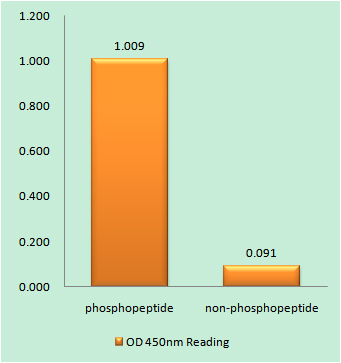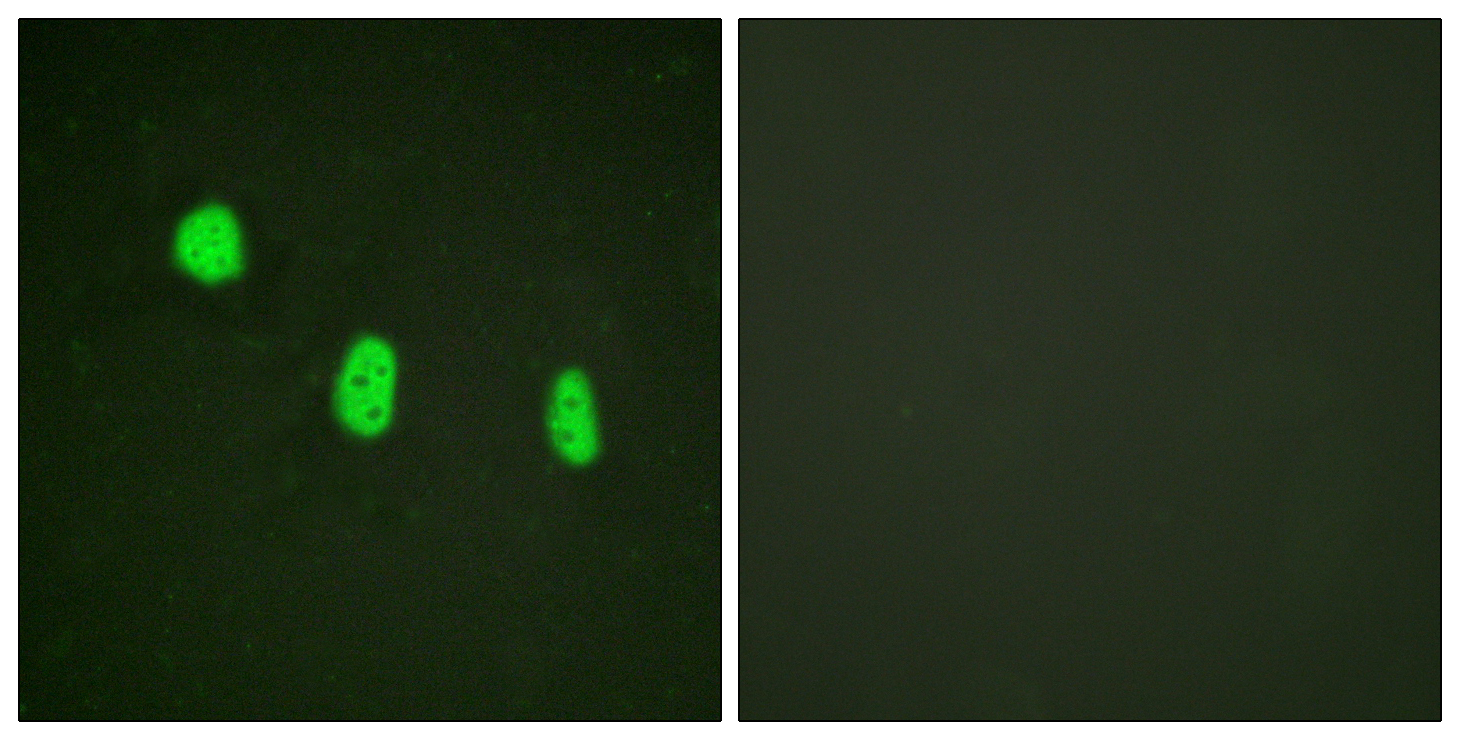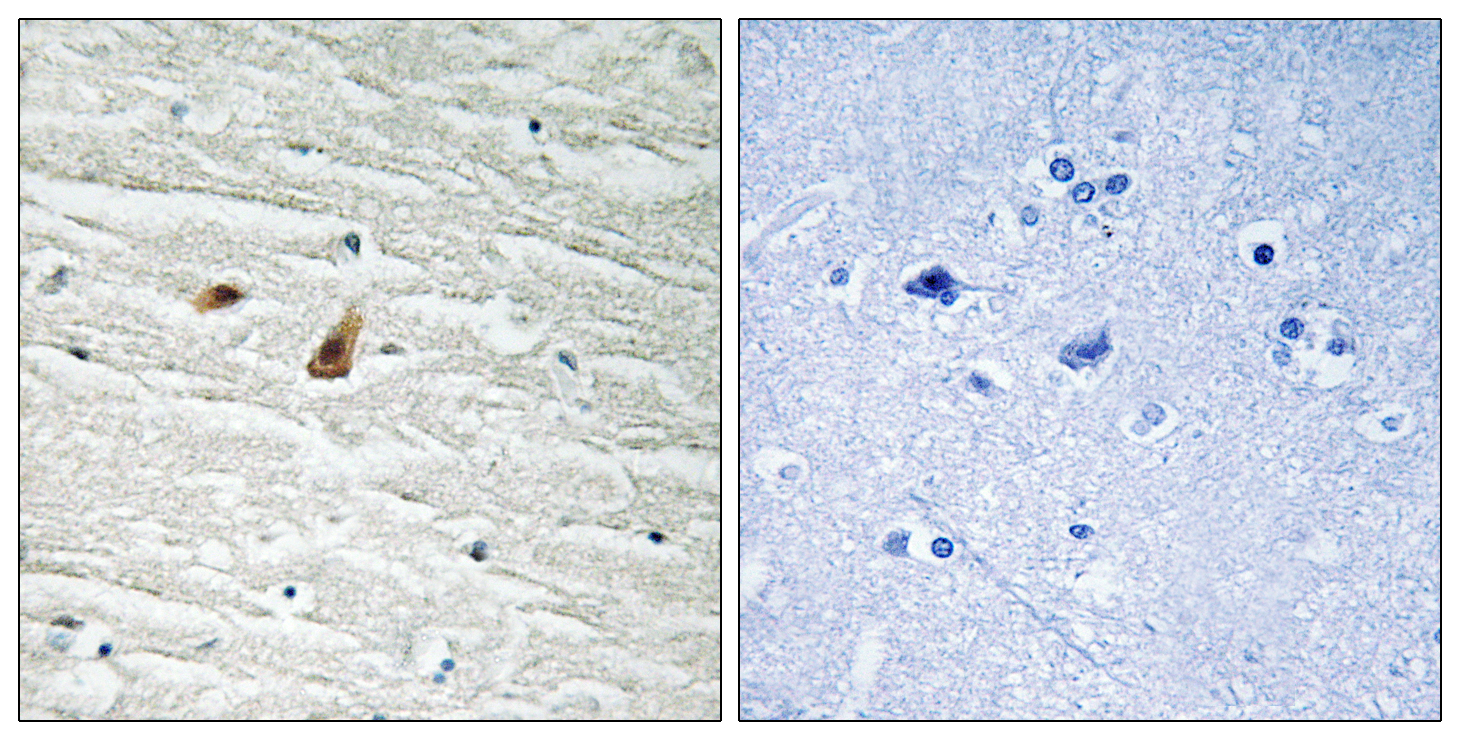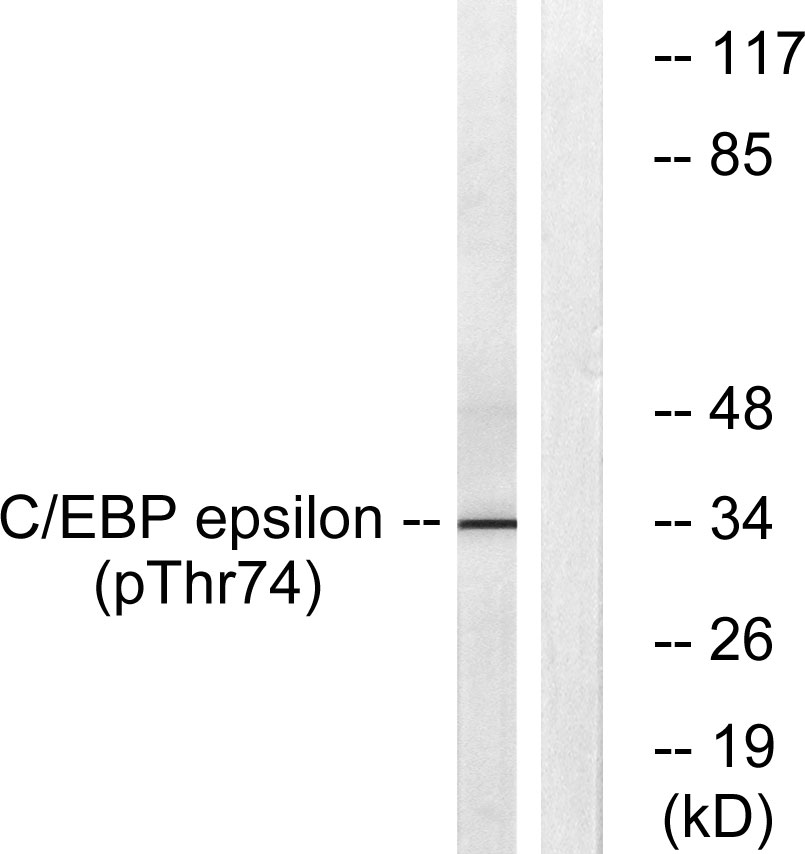产品名称
C/EBP ε (phospho Thr74) Rabbit Polyclonal Antibody
别名
CEBPE; CCAAT/enhancer-binding protein epsilon; C/EBP epsilon
蛋白名称
CCAAT/enhancer-binding protein epsilon
存储缓冲液
Liquid in PBS containing 50% glycerol, 0.5% BSA and 0.02% New type preservative N.
Human Gene Link
http://www.ncbi.nlm.nih.gov/sites/entrez?db=gene&term=1053
Human Swissprot No.
Q15744
Human Swissprot Link
http://www.uniprot.org/uniprotkb/Q15744/entry
Mouse Swissprot No.
Q6PZD9
Mouse Swissprot Link
http://www.uniprot.org/uniprot/Q6PZD9
免疫原
The antiserum was produced against synthesized peptide derived from human C/EBP-epsilon around the phosphorylation site of Thr74. AA range:40-89
特异性
Phospho-C/EBP ε (T74) Polyclonal Antibody detects endogenous levels of C/EBP ε protein only when phosphorylated at T74.
稀释度
WB 1:500 - 1:2000. IHC 1:100 - 1:300. IF 1:200 - 1:1000. ELISA: 1:20000. Not yet tested in other applications.
宿主
Polyclonal, Rabbit,IgG
背景介绍
The protein encoded by this gene is a bZIP transcription factor which can bind as a homodimer to certain DNA regulatory regions. It can also form heterodimers with the related protein CEBP-delta. The encoded protein may be essential for terminal differentiation and functional maturation of committed granulocyte progenitor cells. Mutations in this gene have been associated with Specific Granule Deficiency, a rare congenital disorder. Multiple variants of this gene have been described, but the full-length nature of only one has been determined. [provided by RefSeq, Jul 2008],
组织表达
Strongest expression occurs in promyelocyte and late-myeloblast-like cell lines.
功能
function:C/EBP are DNA-binding proteins that recognize two different motifs: the CCAAT homology common to many promoters and the enhanced core homology common to many enhancers.,online information:CEBPE mutation db,PTM:Phosphorylated.,similarity:Belongs to the bZIP family. C/EBP subfamily.,similarity:Contains 1 bZIP domain.,subunit:Binds DNA as a dimer and can form stable heterodimers with C/EBP delta.,tissue specificity:Strongest expression occurs in promyelocyte and late-myeloblast-like cell lines.,
纯化
The antibody was affinity-purified from rabbit antiserum by affinity-chromatography using epitope-specific immunogen.




